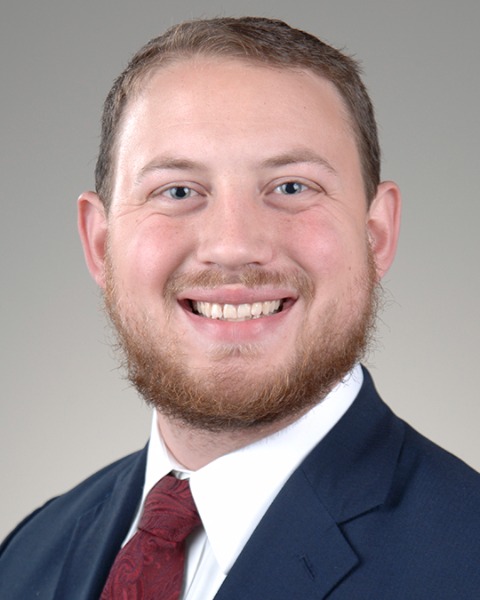Back


Poster Session C - Monday Afternoon
Category: General Endoscopy
C0310 - Discovery of Gastric Adenocarcinoma During PEG Tube Placement in Patient With Epiglottic Squamous Cell Carcinoma
Monday, October 24, 2022
3:00 PM – 5:00 PM ET
Location: Crown Ballroom

Has Audio

Sean Halloran, BS
University of Toledo College of Medicine and Life Sciences
Toledo, OH
Presenting Author(s)
Sean Halloran, BS1, Sara Stanley, DO2, Jordan Burlen, MD3, Muhammad Aziz, MD4, Benjamin Hart, MD, PhD, MPH2
1University of Toledo College of Medicine and Life Sciences, Toledo, OH; 2University of Toledo, Toledo, OH; 3The Ohio State University, Toledo, OH; 4The University of Toledo Medical Center, Toledo, OH
Introduction: Multiple primary neoplasms constitute up to 2-17% of cancer diagnoses. Etiological factors such as genetics, lifestyle choices, and immune status have a significant impact on the likelihood of patients developing synchronous multiple primary tumors. The timing of diagnosis for the different cancers has a major impact on disease management, treatment plans, and patient outcomes. We report a patient who was diagnosed with gastric adenocarcinoma at the time of percutaneous endoscopic gastrostomy (PEG) tube placement for dysphagia secondary to squamous cell carcinoma of the anterior epiglottis.
Case Description/Methods: A 77-year old male presented to the outpatient surgery center for upper endoscopy with PEG tube placement. Two months prior, the patient was diagnosed with p16 negative invasive squamous cell carcinoma of the anterior epiglottis. He was referred for PEG tube placement for nutrition supplementation due to 5 months of progressive dysphagia and protein calorie malnutrition with an unintentional weight loss of 50 lbs. Past social history was significant for tobacco dependence with 52 pack years and alcohol dependence. At the time of PEG tube placement, endoscopy revealed a 1.5 cm excavated lesion at the gastric incisura. Biopsy was performed to rule out malignancy. PEG tube was successfully placed. The gastric biopsy was consistent with diffuse type signet ring gastric adenocarcinoma. PET scan 1 month prior to PEG tube placement did not show any foci of abnormal FDG uptake outside of the primary lesion in the epiglottis. Patient is currently undergoing treatment for laryngeal carcinoma with chemotherapy and radiation. Assessment and treatment for gastric cancer diagnosis will be deferred until completion of treatment for laryngeal carcinoma.
Discussion: Concurrent laryngeal and gastric cancer is a unique diagnosis that has not been well reported in the literature. However, given the strong association for both malignancies with chronic alcohol and tobacco use, it is not unreasonable for both to occur in the same patient in an independent manner. The literature has shown that signet ring cell carcinomas have significantly lower 18F-FDG uptake than other forms of gastric cancer. These findings highlight the importance of completing a full endoscopic evaluation in all patients undergoing endoscopy even for procedures as straightforward as PEG tube placement.

Disclosures:
Sean Halloran, BS1, Sara Stanley, DO2, Jordan Burlen, MD3, Muhammad Aziz, MD4, Benjamin Hart, MD, PhD, MPH2. C0310 - Discovery of Gastric Adenocarcinoma During PEG Tube Placement in Patient With Epiglottic Squamous Cell Carcinoma, ACG 2022 Annual Scientific Meeting Abstracts. Charlotte, NC: American College of Gastroenterology.
1University of Toledo College of Medicine and Life Sciences, Toledo, OH; 2University of Toledo, Toledo, OH; 3The Ohio State University, Toledo, OH; 4The University of Toledo Medical Center, Toledo, OH
Introduction: Multiple primary neoplasms constitute up to 2-17% of cancer diagnoses. Etiological factors such as genetics, lifestyle choices, and immune status have a significant impact on the likelihood of patients developing synchronous multiple primary tumors. The timing of diagnosis for the different cancers has a major impact on disease management, treatment plans, and patient outcomes. We report a patient who was diagnosed with gastric adenocarcinoma at the time of percutaneous endoscopic gastrostomy (PEG) tube placement for dysphagia secondary to squamous cell carcinoma of the anterior epiglottis.
Case Description/Methods: A 77-year old male presented to the outpatient surgery center for upper endoscopy with PEG tube placement. Two months prior, the patient was diagnosed with p16 negative invasive squamous cell carcinoma of the anterior epiglottis. He was referred for PEG tube placement for nutrition supplementation due to 5 months of progressive dysphagia and protein calorie malnutrition with an unintentional weight loss of 50 lbs. Past social history was significant for tobacco dependence with 52 pack years and alcohol dependence. At the time of PEG tube placement, endoscopy revealed a 1.5 cm excavated lesion at the gastric incisura. Biopsy was performed to rule out malignancy. PEG tube was successfully placed. The gastric biopsy was consistent with diffuse type signet ring gastric adenocarcinoma. PET scan 1 month prior to PEG tube placement did not show any foci of abnormal FDG uptake outside of the primary lesion in the epiglottis. Patient is currently undergoing treatment for laryngeal carcinoma with chemotherapy and radiation. Assessment and treatment for gastric cancer diagnosis will be deferred until completion of treatment for laryngeal carcinoma.
Discussion: Concurrent laryngeal and gastric cancer is a unique diagnosis that has not been well reported in the literature. However, given the strong association for both malignancies with chronic alcohol and tobacco use, it is not unreasonable for both to occur in the same patient in an independent manner. The literature has shown that signet ring cell carcinomas have significantly lower 18F-FDG uptake than other forms of gastric cancer. These findings highlight the importance of completing a full endoscopic evaluation in all patients undergoing endoscopy even for procedures as straightforward as PEG tube placement.

Figure: Esophagogastroduodenoscopy showing gastric adenocarcinoma at the gastric incisura.
Disclosures:
Sean Halloran indicated no relevant financial relationships.
Sara Stanley indicated no relevant financial relationships.
Jordan Burlen indicated no relevant financial relationships.
Muhammad Aziz indicated no relevant financial relationships.
Benjamin Hart indicated no relevant financial relationships.
Sean Halloran, BS1, Sara Stanley, DO2, Jordan Burlen, MD3, Muhammad Aziz, MD4, Benjamin Hart, MD, PhD, MPH2. C0310 - Discovery of Gastric Adenocarcinoma During PEG Tube Placement in Patient With Epiglottic Squamous Cell Carcinoma, ACG 2022 Annual Scientific Meeting Abstracts. Charlotte, NC: American College of Gastroenterology.
